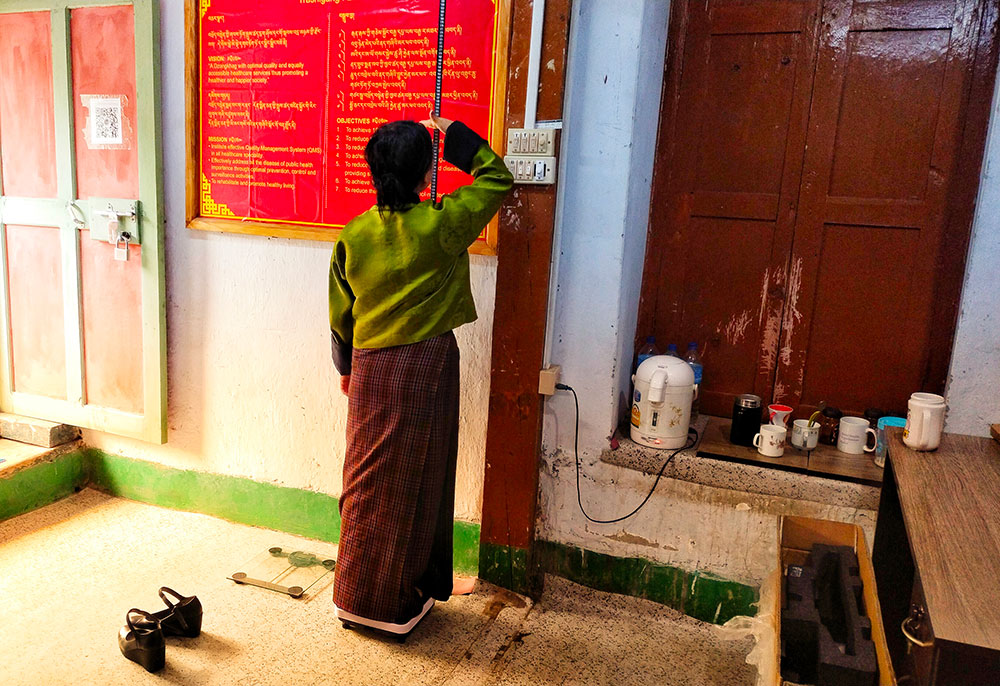Neten Dorji
Trashigang—In 2002, when Pema Deki embarked on her career journey as a pharmacy technician at Trashigang’s dzongkhag hospital, the healthcare landscape looked remarkably different. Then, a solitary individual had been diagnosed with diabetes within the hospital’s walls.
It is an era worth remembering, for it was a time then medical resources we now take for granted—antidiabetics like Metformin, Insulin, or Glipizide were conspicuously absent from the hospital’s inventory. For the patient’s requisite medications, Pema had to ask medicines from Mongar Regional Referral Hospital.
Pema notes that today’s pharmaceutical regimens are dominated by medications like Metformin, followed closely by Insulin, Losartan, Nifedipine, Esidrix, and a gamut of other essential drugs. The transformation, as she affirms, has been nothing short of astounding.
Pema observes that the demographics of patients under her care, particularly those grappling with non-communicable diseases, have undergone a discernible change.
An analysis of the data amassed by the Dzongkhag Health Sector reveals staggering figures. Within a mere eight months, a total of 2,549 cases of hypertension, 260 instances of hypertension combined with diabetes mellitus, 190 cases of diabetes mellitus, 104 instances of asthma, 47 cases of Chronic Obstructive Pulmonary Disease (COPD), and 17 occurrences of Chronic Kidney Disease (CKD) were recorded.
The data also elucidates a disconcerting urban-rural divide, with rural inhabitants exhibiting a higher susceptibility to diabetes.
Dorji Choedup, an assistant dietician at the hospital, sheds light on a disconcerting trend—95 percent of the patients streaming through the outpatient department (OPD) doors comprise of farmers and drivers with diabetes.
Dorji attributes this disconcerting trend to a confluence of factors: Unhealthy diet, lack of balanced diet, consumption of alcohol, stress, food rich in carbohydrates, salt, and sugar, obesity, and changing lifestyles.
Seeking medical attention prior to the onset of symptoms remains a rarity; patients, Dorji said, usually seek medical aid only when their health has already been compromised.
The reluctance of most diagnosed individuals to adhere to medication regimens is another challenge.
Characteristic symptoms of diabetes—weight loss, excessive thirst and hunger, frequent urination, and delayed wound healing—are well documented. Countermeasures against this ailment encompass commitment to healthy dietary choices and regular physical activity. Containment, however, frequently necessitates dietary modifications accompanied by pharmacological intervention.
Phub Dorji, non-communicable diseases (NCD) focal person, carries out a weekly screening at the hospital with nutritional advocacy.
“We counsel people to embrace foods with low glycemic indices, including verdant leafy vegetables, citrus fruits, legumes, dairy products, and milk,” Phub said. A triumvirate of diet, medication, and physical activity, he added, are critically important to fight such debilitating disorders.
Imbalanced diets and unhealthy eating habits are the main culprits that lead to the surge in NCDs, particularly diabetes. The issue, Phub underscored, often lies in the dietary habits of highland dwellers who predominantly consume dairy products.
NCDs, it seems, has solidified its status as one of the foremost life-threatening scourges facing the nation. NCDs have overtaken communicable diseases as the chief nemesis since 2019.
Untreated diabetes can result in vision loss, diabetic foot ulcers, renal complications, neuropathy, infections, and cardiovascular events among others. With the toll of lives at stake, health officials have rallied to screen over 1,014 individuals over the past four years.
Deputy chief health officer, Lobzang Dorji, points out a glaring misconception, unfounded fear among the populace that diabetes medications might irreparably damage the kidneys.
Meanwhile, the dzongkhag administration has launched a dedicated NCD screening corner, empowering civil servants to actively engage in the battle against these insidious diseases.
As Trashigang grapples with the many challenges of NCDs, one thing remains clear: the relentless march toward a healthier future demands unwavering dedication from both the healthcare fraternity and the individuals they serve.


